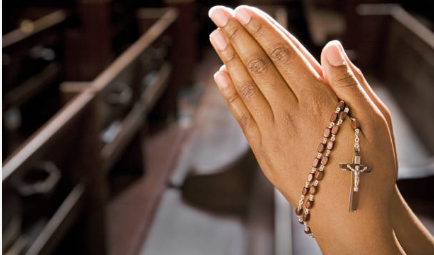January is a celebrated time of new beginnings and introspection. Across the country, people eagerly assemble lists of resolutions for becoming their best selves in the New Year. These resolutions serve as guide maps for pursuing excellence throughout the year. For the Catholic community, January is also a time of reflection, as it is rich with feast days for venerating saints and holy figures. Similar to the guidance provided by a list of resolutions, these feast days provide designated times in which Catholics can remember and deepen their faith and pursue the ultimate goal of achieving harmony with God.
On January 1, Catholics celebrate the feast day of the Solemnity of Mary, the Mother of God. During this day, both the Virgin Mary and her son are venerated, as the narratives of the two are linked. Catholics became aware of her through her devotion to God in the birth of Jesus, and knowledge of Mary informs knowledge of Christ. Just as Jesus is revered with the title of, “Prince of Peace,” Mary is venerated with the title, “Queen of Peace.” Sometime in early January (often January 6), the Solemnity of the Epiphany is celebrated. This feast day recognizes the three magi and their meeting with the infant Jesus Christ. It is from this celebration that the twelve days of Christmas originate, as Christmas is celebrated on December 25th and the three magi’s visit is typically celebrated on January 6th. On January 25th, the Feast of the Conversion of Saint Paul is commemorated. Initially in life, Saul persecuted the Christians. It was not until he witnessed an apparition of God that he was converted and devoted himself to spreading the Good News. His feast day allows Catholics to celebrate the converted Apostle and his contributions to the Church.
While these are the main three Catholic feast days in January, there are others for the saints throughout the month. For example, on January 28, scholars celebrate the life and contributions of Saint Thomas Aquinas, a man famous for his proofs that defended the existence of a divine entity. As the second semester begins, Aquinas is a great patron saint for students to pray to for guidance in regards to the academic elements of New Year’s goals. It is encouraged to research and connect with the Saints, as they can provide insights that can enhance not only ones’ scholarly lives, but the human experience.
References
Feast of the Conversion of St. Paul. (n.d.). Catholic Culture. Retrieved January 27, 2025, from https://www.catholicculture.org/culture/liturgicalyear/calendar/day.cfm?date=2022-01-25
Saint Feast Days in January. (n.d.). Catholic Online. Retrieved January 27, 2025, from https://www.catholic.org/saints/f_day/jan.php
Solemnity of Mary, Holy Mother of God. (n.d.). Saint Boniface. Retrieved January 27, 2025, from https://stboniface-lunenburg.org/solemnity-of-mary-mother-of-god#:~:text=The%20Solemnity%20of%20Mary%2C%20Holy,of%20the%20octave%20of%20Christmas.
Solemnity of the Epiphany of the Lord. (n.d.). Roman Catholic Diocese of Portland. Retrieved January 27, 2025, from https://portlanddiocese.org/solemnity-epiphany-lord

